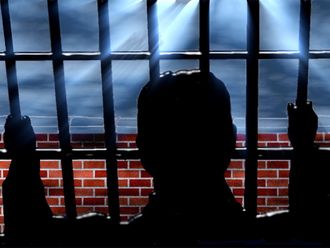
Manila: A dismissed policeman turned hostage-taker was responsible for the killing of all foreign hostages in Manila's tourist district late on Monday, said a Filipino tourist bus driver who survived the bloody incident.
Former Police officer Rolando Mendoza, the 55-year old hostage-taker began to get agitated when he saw through the bus window that a policeman, Chief Inspector Romeo Salvador, had taken the gun from his brother Gregorio Mendoza, bus driver Alberto Lubang said in a TV interview.
Lubang said the hostage-taker fired several shots when Inspector Salvador refused to return the gun to Mendoza's brother, adding that negotiators also ran away when they heard the shots.
The hostage taker became very agitated when he saw on the tourist bus TV monitor, that his brother was being handcuffed by policemen and forced into a police car, Lubang said.
"(At the time) I heard him say (in Filipino), 'I'll kill all the hostages if you (policemen) don't release my brother. You should release him'," Lubang said.
Before this happened, the brother was allowed by the policemen to talk to the hostage-taker on a mobile phone, to negotiate for the safe release of the hostages, Lubang said.
Exasperated, the hostage-taker also wrote his demand to negotiate with reporters on a piece of paper. This was posted on the windshield of the tourist bus, Lubang said.
The written demand was not acted upon, Lubang said.
The hostage taker became more agitated when he received a letter (which turned out to be from Ombudsman Merceditas Gutierrez), Lubang said. This was in response to his request for the Ombudsman to change its 2009 ruling which called for his dismissal.
The driver said before this happened, the hostage-taker sent out a brown envelope which contained papers about a case filed against him in 2008. This was given to Supt. Rolando Yebra, assigned by the Philippine National Police (PNP) as the chief negotiator.
Supt. Yebra assured the hostage-taker that the Ombudsman would take immediate action, for which he demanded for the release of some hostages, who were three children and a woman, Lubang said.
At the time, Lubang said the hostage-taker was calm and he heard him say: "I want my case at the Ombudsman to be heard. Don't worry. I promise that nothing will happen (to the hostages) if my demand is followed (by the Ombudsman)”.
It remained unclear when the hostage-taker started shooting at the hostages. Lubang said when the hostage-taker started shooting, he managed to break away by pushing the door of the tourist bus open, and running away. He did not explain who closed the door.
A Chinese national from Hong Kong who identified herself as Mrs Ng was reported as saying to Chinese reporters from Hong Kong that the hostage-taker killed her husband when the latter realised that the killing of hostages might start.
"He was very brave. He rushed forward from the back of the bus. He wanted to prevent the gunman from killing people. He sacrificed himself," Mrs Ng was quoted as saying.
The hostage-taker was not planning to "kill us, but since the negotiation failed, he shot to kill people," Mrs Ng said.
It is not known if some hostages were killed just as police entered the bus, fired tear gas and then shot the hostage-taker in the head. TV reports said the police stormed the bus and killed the hostage-taker, after the latter had fired at the tourists, killing eight of them.
Wang Zhouyao, 15, recalled: "I hid under a seat (when the gunman started to fire)”.
"Then the police dispersed gas. People in the bus were struggling. I could hear that many people couldn't breathe," Zhouyao said from her hospital bed.
Various agencies from the Philippines and Hong Kong have begun to investigate the incident.
Forensic reports will show if the eight Hong Kong nationals who were killed died from the hostage-taker's hand or from the exchange of fire between the hostage-taker and police.
Seven hostages were injured: one had a head wound, another a shattered jawbone, and another was wounded in the waist. Nine survivors were freed by the hostage-taker before the gunfire began.
Amid criticism about inept and unprofessional handling of the crisis, police authorities blamed the police force's lack of proper equipment. Lawmakers said the absence of a man in charge of handling the crisis was the real culprit.
On Tuesday, President Benigno Aquino presented a preliminary investigation into the bloody hostage crisis to Chinese Ambassador to Manila Liu Jianchao
Aquino would send Vice President Jejomar Binay and Foreign Secretary Alberto Romulo to present the final report of the investigation to Chinese authorities in Beijing and Hong Kong, officials said.
It was Aquino's first major crisis after two months in office.
Do you think the situation was handled well by police? Could more lives have been saved if they had negotiated more?
















